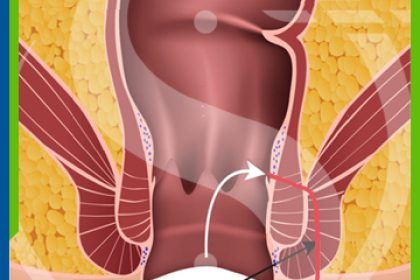
What is Anal Fistula?
Fistula is formation of a tunnel between anal canal and outer skin tissue. Fistula is the term for tunnel-like formations occurring at a few centimeters distance from anus inside the skin, causing painful swelling and discharge. Anal fistula is generally like later stages of anal abscess, or it can be referred as chronic anal abscess.
Patients usually complain about anal drainage. Drainage is mostly foul-smelling, containing pus. Blood may also be present.
In the abscess anal pain and swelling typically reduce after surgical drainage; however, anal fistula treatment is difficult even today.
Half of anal fistula cases develop secondary to anal abscess. Anal trauma, anal surgery and Crohn disease are other causes.
Diagnosis can often be carried easily by physical examination. However, type of the fistula must be identified in order to design the treatment. Thus, physical examination under anesthesia, fistulogram, MR imaging can be required.
Anal fistula is treated surgically. Identification of fistula type and experience level of the surgeon play important role in treatment success.
Causes of Anal Fistula
More than half of anal fistula cases secondary to anal abscess. Fistula develops due to insufficient recovery of the gap remaining after drainage of abscess into skin or another gap. It forms into a tunnel in time with continued inflammation. The tunnel has two ports, defined as interior and exterior, interior port is located on dentate line of rectum while exterior port is located on the skin around the rectum. Pus accumulation may cause drainage from time to time.
Anal trauma, anal surgery, Crohn disease are other risk factors for anal fistula.
Anal Fistula Diagnosis
Physical examination will be sufficient for diagnosis of most cases. However, physical examination under anesthesia, fistulogram, MR scan can be required to identify the type of fistula.
Anal Fistula Classification
Anal fistulas are classified by their localization in the tract: Intersphincteric fistula (50%), transsphincteric fistula (30%), suprasphincteric fistula (10%), extrasphincteric fistula (3%), horseshoe fistula (3-7%).
Anal Fistula Treatment
Anal fistulas do not heal spontaneously. Watching the fistula without any treatment will only waste time and cause worsening of the condition. Additionally, it is suggested that progressed fistula formation triggers skin cancer in the area.
Anal fistula is treated surgically. Antibiotic treatment can only be used as complementary, and has no curing effect. In surgical treatment of fistula, fistula tract that contains pus is opened and cleaned. In selected patients, laser technology can be utilized during the anal fistula surgery. Anal sphincters may be damaged during surgery. Magnitude of the damage varies with the experience and knowledge of the surgeon.
If the fistula is the case of too long or high, complicated surgical procedures can be employed such as mucosa advancement flaps, delayed fistulotomy, or seton procedure.
Possible Post-Operative Complications
Success of anal fistula treatment is measured by rare recurrence of disease and keeping the muscle damage to minimum. It is a difficult surgery, therefore it must be well-planned and performed by an expert surgeon. Incontinence (loss of bowel control) at varying degrees may occur depending on stage and type of fistula. Severity of incontinence depends on type and characteristics of the disease as well as skills and experience of the surgeon.

